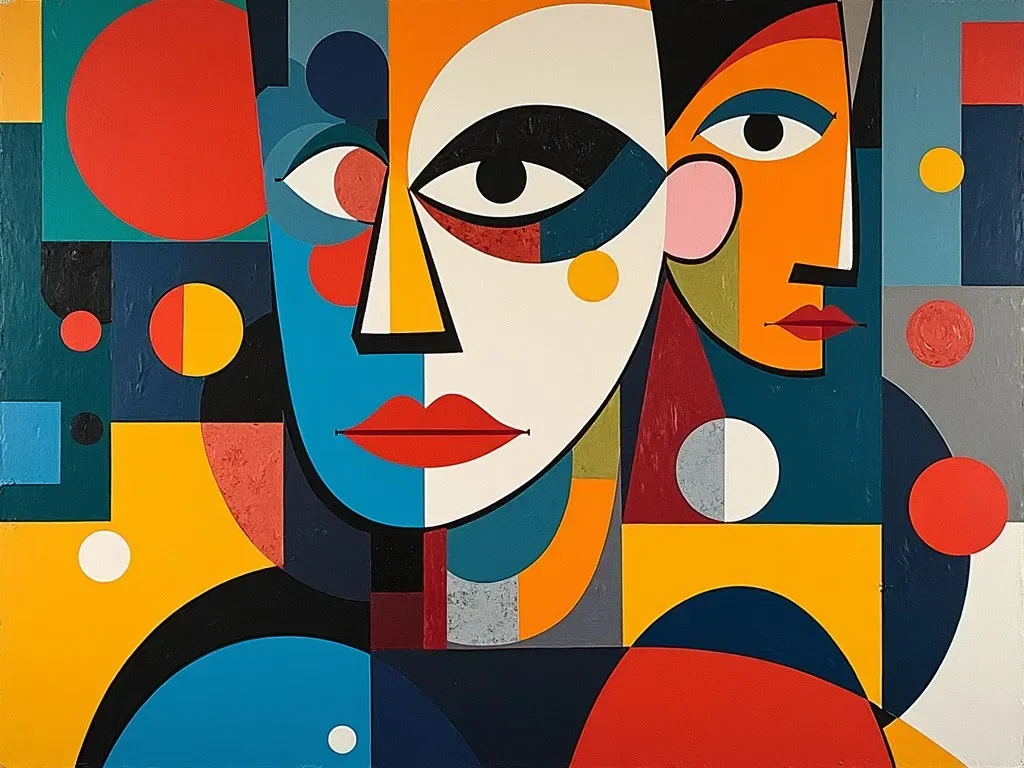Pablo Picasso oil paintings are a cornerstone of modern art, reflecting an unparalleled versatility in style and an innovative spirit that changed the course of artistic expression. This Spanish painter, sculptor, and co-founder of the Cubist movement, is best known for his groundbreaking contributions to the art world, spanning various movements and styles over his prolific career.
A Glimpse Into Picasso’s Life and Artistic Evolution
Pablo Picasso, born on October 25, 1881, in Málaga, Spain, became one of the most significant artists of the 20th century. He lived and worked in various places, primarily in France, and his body of work includes over 20,000 paintings, drawings, sculptures, ceramics, prints, and textiles. His art is categorized into several distinctive periods:
- Blue Period (1901–1904): Characterized by somber blue tones and themes revolving around poverty, loneliness, and human suffering.
- Rose Period (1904–1906): Transitioning to warmer colors, Picasso frequently depicted circus performers and harlequins, reflecting a more upbeat mood.
- African Art and Primitivism (1906–1909): Influenced by African art and culture, his work began to take on more abstract forms.
- Cubism (1907–1917): Co-developed with Georges Braque, this revolutionary style involved breaking objects into geometric shapes and presenting them from multiple angles.
Notable Facts and Figures
| Period | Key Characteristics | Notable Works |
|---|---|---|
| Blue Period | Somber, monochromatic, emotional | The Old Guitarist |
| Rose Period | Warm colors, themes of joy | Family of Saltimbanques |
| African Art | Influences from African cultures | Les Demoiselles d’Avignon |
| Cubism | Geometric shapes, multiple perspectives | Guernica |
Iconic Picasso Paintings You Should Know
Picasso’s oeuvre includes numerous celebrated works that have left an indelible mark on art history. Here are some of his most famous paintings:
-
Guernica (1937): A political statement against the bombing of the town of Guernica during the Spanish Civil War, this monumental work is acclaimed for its emotional power and complex symbolism.
-
Les Demoiselles d’Avignon (1907): Often considered a precursor to Cubism, this painting features five nude women in aggressive postures, challenging traditional representations of the female form.
-
The Weeping Woman (1937): A powerful depiction of grief, this work is associated with the horrors of war, mirroring the themes presented in Guernica.
-
The Weeping Woman (1937): A powerful depiction of grief, this work is associated with the horrors of war, mirroring the themes presented in Guernica.
-
Girl Before a Mirror (1932): This work explores the relationship between identity and self-perception, encapsulating the complexities of femininity.
Table: Picasso’s Key Paintings and Their Impact
| Painting | Year | Significance |
|---|---|---|
| Guernica | 1937 | Powerful anti-war statement; a symbol of suffering |
| Les Demoiselles d’Avignon | 1907 | Revolutionized modern art; precursor to Cubism |
| The Weeping Woman | 1937 | Emotional representation of grief and loss |
| Girl Before a Mirror | 1932 | Exploration of identity and self-image |
Reference Video
The Techniques Behind Picasso’s Masterpieces
Picasso was a master of various painting Techniques, often experimenting with oils, ceramics, and mixed media. Some defining aspects of his work include:
- Cubism: Breaking down subjects into geometric forms, creating fragmented and abstract views of reality.
- Brushwork: Picasso utilized both precise brush techniques and spontaneous strokes, allowing a dynamic contrast in texture.
- Color Theory: His strategic use of color conveyed emotions, as seen in his Blue and Rose periods.
- Symbolism: Many of his works are rich in visual metaphors, allowing various interpretations and emotional reactions.
Examining the Influence of Picasso’s Art
A Pioneer of Modern Art
Picasso’s influence extends far beyond his own creations. His innovative approach laid the groundwork for various movements, including Surrealism and Abstract Expressionism. His ability to break free from traditional representations inspired countless artists who sought to explore new ways of expression.
Picasso in Popular Culture
The impact of Picasso’s art can also be seen in popular culture. Numerous films, books, and exhibitions have sought to interpret and celebrate his legacy. Artists from various disciplines have cited him as an influence, underscoring his enduring relevance.
Frequently Asked Questions (FAQ)
What are the most famous Picasso paintings?
Some of the most famous Picasso paintings include Guernica, Les Demoiselles d’Avignon, The Weeping Woman, and Girl Before a Mirror.
How many artworks did Picasso create?
Pablo Picasso created an estimated 20,000 artworks throughout his lifetime, including paintings, sculptures, ceramics, and prints.
What is the significance of Guernica?
Guernica is one of Picasso’s most significant works, serving as a powerful anti-war statement that reflects the suffering inflicted during the Spanish Civil War.
Where can I view Picasso’s works?
Many of Picasso’s works are displayed in major museums around the world, such as the Musée Picasso in Paris, the Museum of Modern Art (MoMA) in New York, and the Art Institute of Chicago. For an extensive collection of his works, you can visit WikiArt.
What was Picasso’s contribution to Cubism?
Picasso, alongside Georges Braque, co-founded the Cubist movement, which revolutionized European painting and sculpture through its approach of representing subjects from multiple perspectives.
Conclusion Placeholder
This comprehensive exploration of Picasso paintings allows readers to not only appreciate his artistry but also to understand the historical and emotional significance of his work. Through a lifelong commitment to innovation, Picasso reshaped the landscape of art, making an indelible mark that continues to influence generations.
